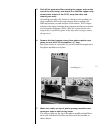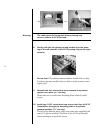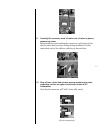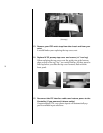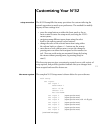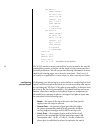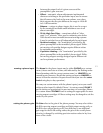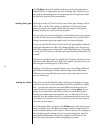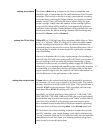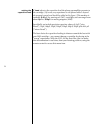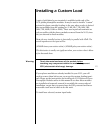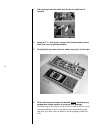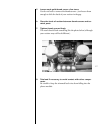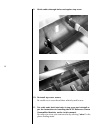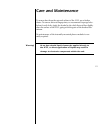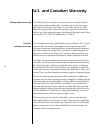
23
setting the balance The balance (Bal) setting is unique to the phono preamplifier, and
should be used to compensate for the small imbalances found in most
cartridges. The best way to do this is to play a monophonic recording
in normal stereo, centering the image between your speakers with the
balance control. Once you know the correct balance offset for a par-
ticular cartridge, simply enter this number in that cartridge’s phono
setup, and the change will be made for you, automatically, whenever
you listen to that cartridge. Normal balance will be restored when you
switch away from the phono cartridge. Separate balance settings may
be saved for Phono 1 and for Phono 2.
setting the 20 Hz filter 20Hz HPF is a 20 Hz high pass filter, sometimes called either an “infra-
sonic” or a “subsonic” filter. It is designed to reduce turntable rumble
and the cartridge/arm resonances which can often be stimulated by
even small warps in the record as it turns. You may either turn it on or
off, depending on whether it seems needed for a particular cartridge/
arm combination.
One way to determine this is to play a quiet passage of a recording at a
relatively high level with your speaker grilles off. Watch your woofers. If
they are moving in and out noticeably without there being a clearly
correlated low bass sound, you should probably engage the 20Hz HPF.
Otherwise, you are wasting both amplifier power and woofer excursion
on something you cannot hear directly; the indirect effect of modulat-
ing the woofer’s output with non-musical, sub-20 Hz information can
only be deleterious to the performance of the system.
setting the resistive load R Load refers to the resistive load the phono preamplifier presents to
the cartridge. (Of course, any resistance in the phono cables is beyond the
preamp’s control and would be added to this figure.) The optimal value is
normally 47kΩ for moving magnet (MM) cartridges, and can range
from about 3Ω to 47kΩ for moving coils (MC).
Specifically, we include precision resistor values of 3.3Ω, 5.0Ω, 7.7Ω,
10Ω, 33Ω, 50Ω, 77Ω, 100Ω, 330Ω, and 47kΩ, plus a set of gold-plated
terminals that may be used for accessing some “other,” custom value of
your choice. You would do so by placing a precision resistor across
these terminals located inside each of the phono modules, tightening
the screws down, and then selecting other in the R Load menu item.
The best choice for resistive loading is whatever sounds the best with
your MC cartridge—you cannot damage a cartridge by playing at the
“wrong” resistance. With the Nº32, for the first time, you can make this
determination in real time, from your listening position, using the re-
mote control to access this menu item.



